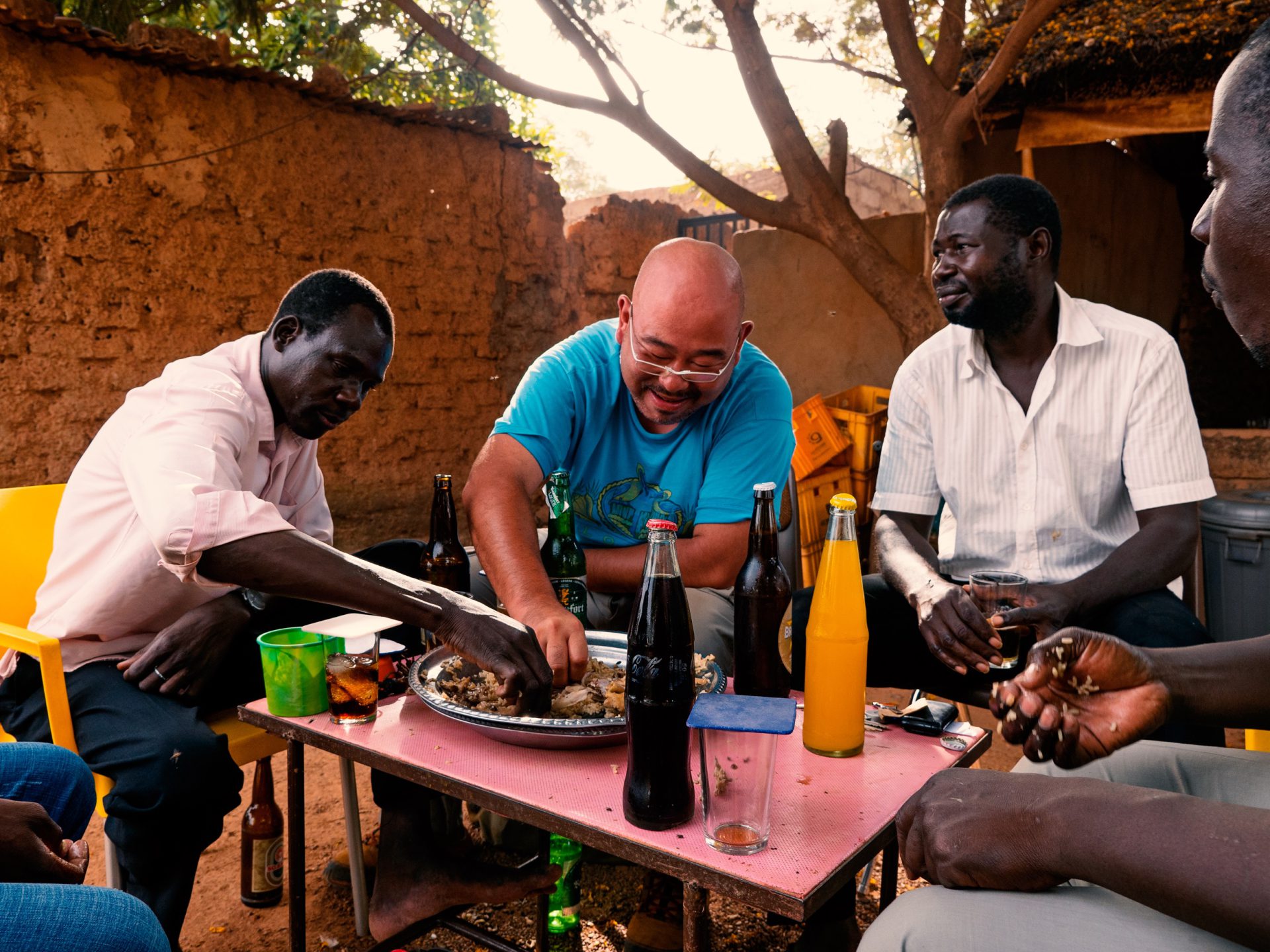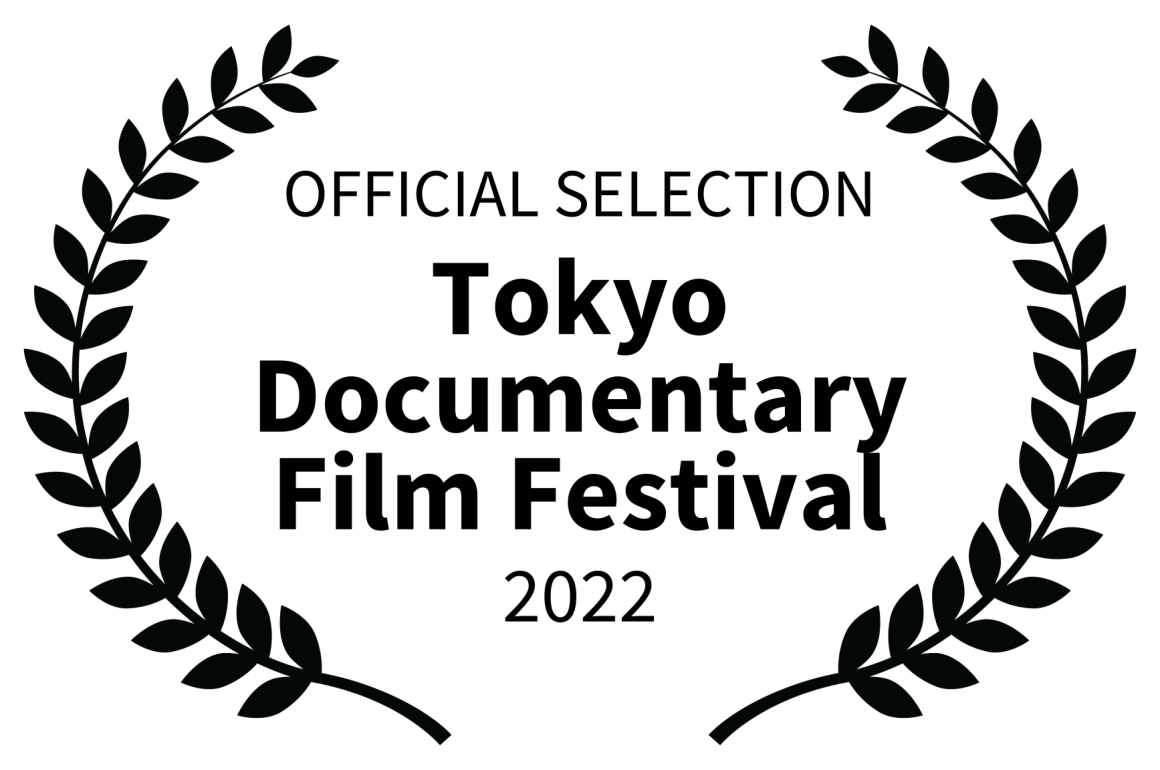
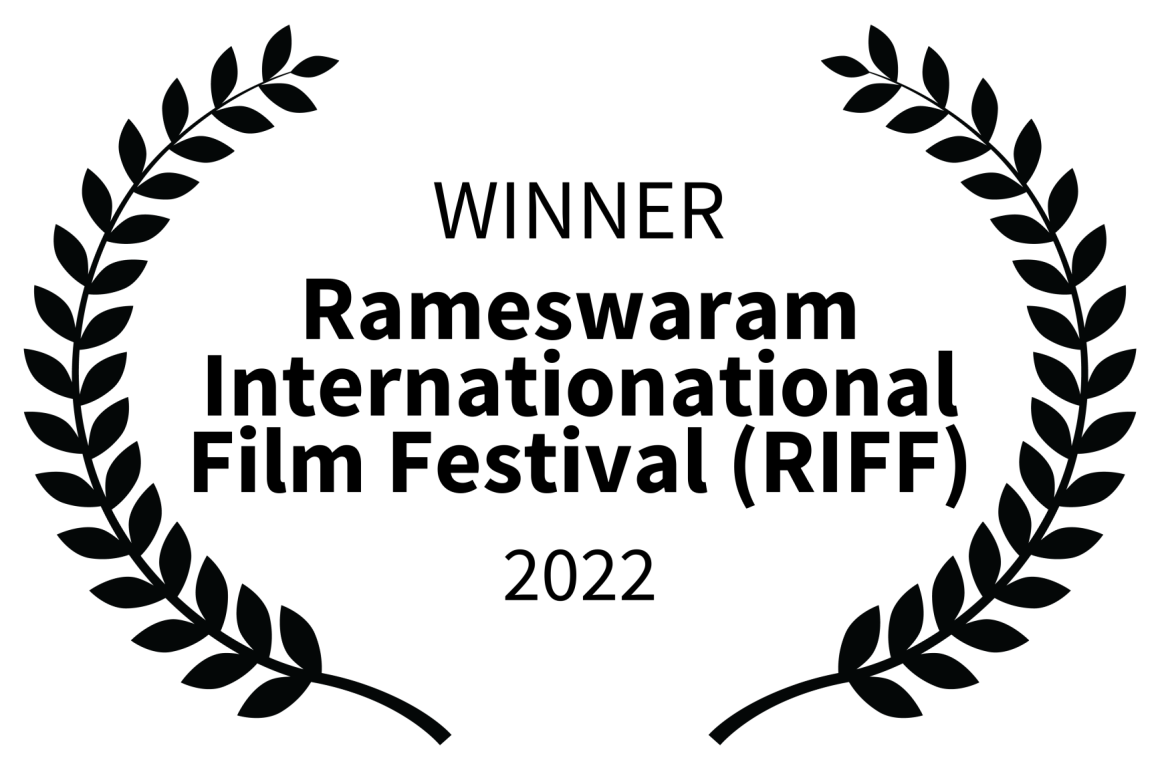
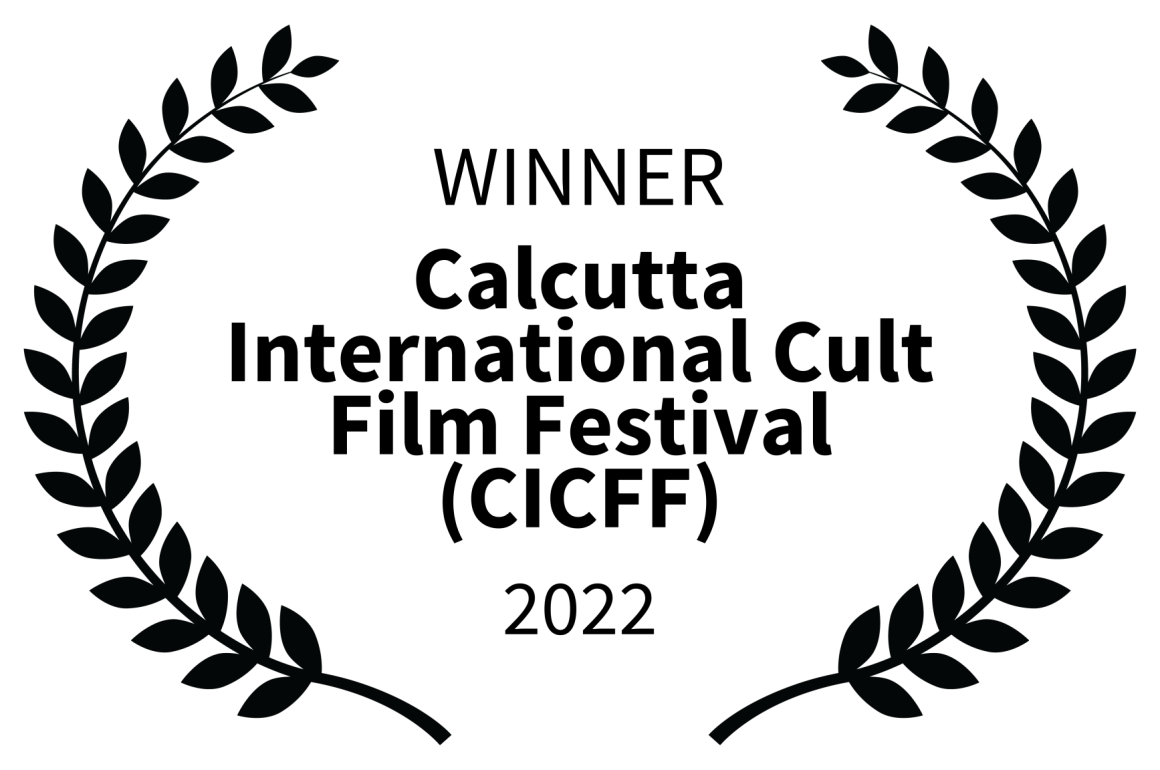
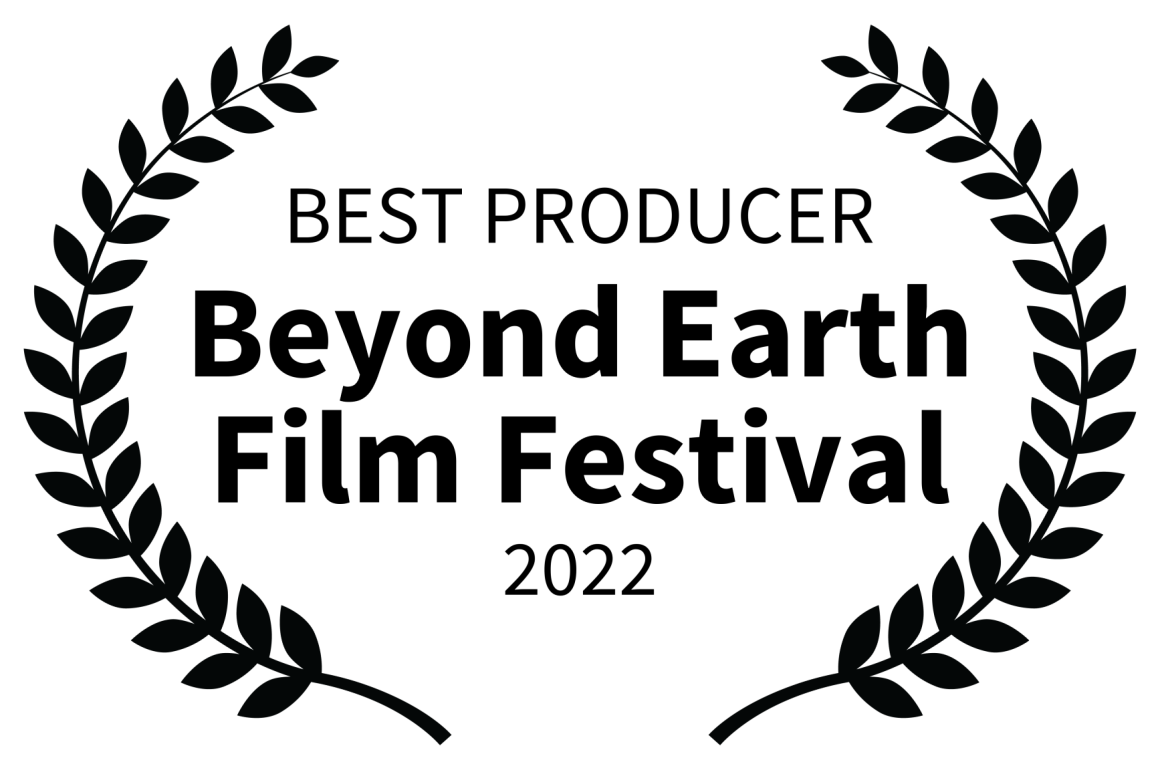
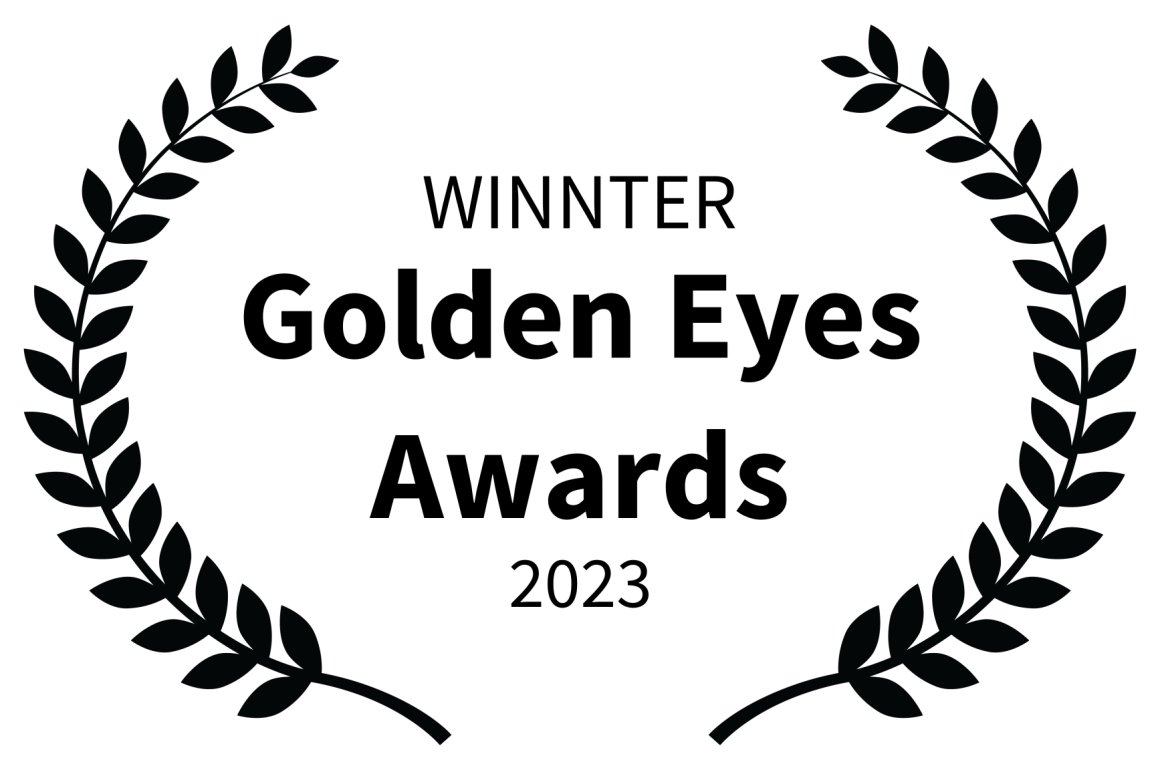
Multiple layers of fragmented images and gazes
that take us on a never-ending journey.
The film is a new way of communication.
*A video work in which some of the images from “#manazashi” are re-edited into a different version.
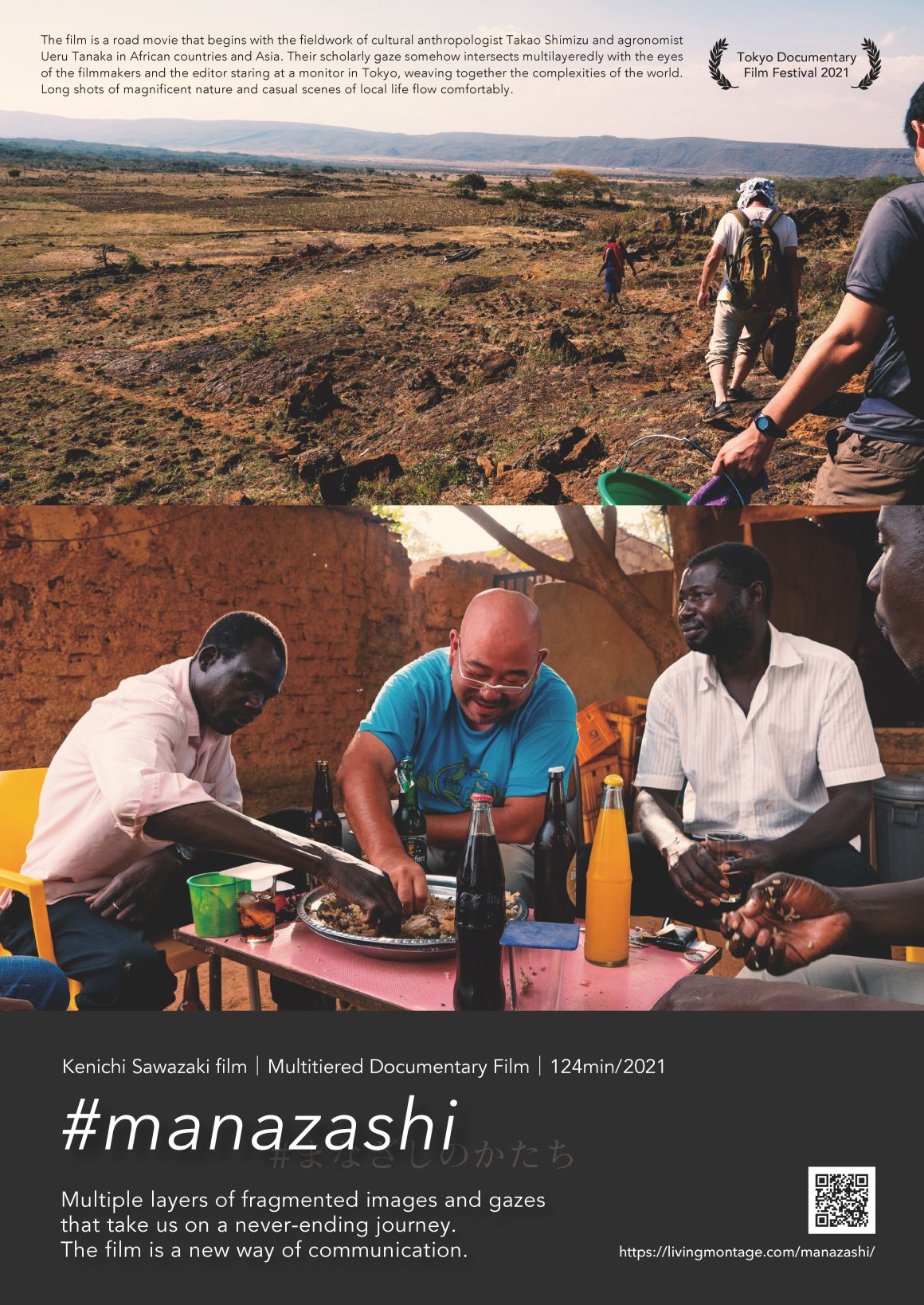
From the introduction by Tokyo Documentary Film Festival 2021
About the video work #manazashi ※1
Many people are drawn to travel, but in today’s world, travel is not merely about moving from one physical “place.” We now share images we capture and edit ourselves through social media and other platforms, and every day, we journey through various “sites” via images on the internet.
#manazashi is a work that presents a new form of communication through visual imagery.
You create your own journey while watching footage documenting travels to Africa and Southeast Asia. This journey, reminiscent of a new beginning, is imbued with the creativity born from the active desire to see the world reflected on screen.
This film records human activities from diverse perspectives in locations such as Tanzania, Kenya, Burkina Faso, Senegal, Vietnam, and Japan—where agronomist Ueru Tanaka and cultural anthropologist Takao Shimizu conducted their research. Additionally, the voices of viewers watching these recorded images intersect in multiple layers, weaving together the world’s complexity.
This documentary not only serves as a record of the researchers’ activities but also offers a moment that invites you on a new journey. By adding your own #manazashi to the images you recall, the film opens up new possibilities.
#manazashi is an ever-evolving collection of fragmented footage that never reaches a final, complete form. The process of contemplating how to view these fragments is, in itself, part of the work—a “site” of expression.
This film is a “site” deeply connected to the very essence of human existence, one that never converges into a single ending.
Kenichi Sawazaki
screening
5 March 2022.
Tokyo Documentary Film Festival in OSAKA 2022
@Theater Seven
5F, Osaka Sunpord City, 1-7-27 Jusohonmachi, Yodogawa-ku, Osaka 160-0022, Japan
Organiser : neoneo
13 December 2021
Tokyo Documentary Film Festival 2021, Feature Length Competition
@K’s cinema
3F, 3-35-13 Shinjuku, Shinjuku-ku, Tokyo 160-0022, Japan
Organiser : neoneo
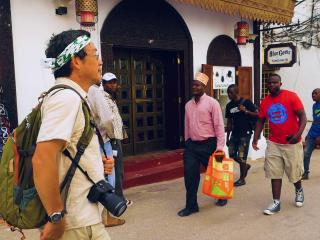

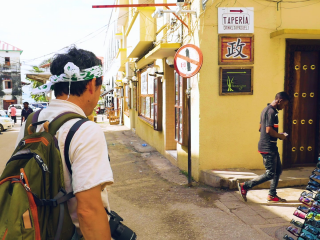
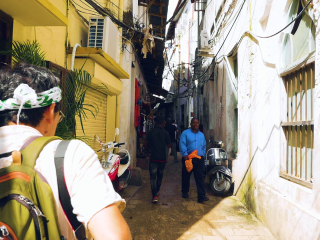
Director
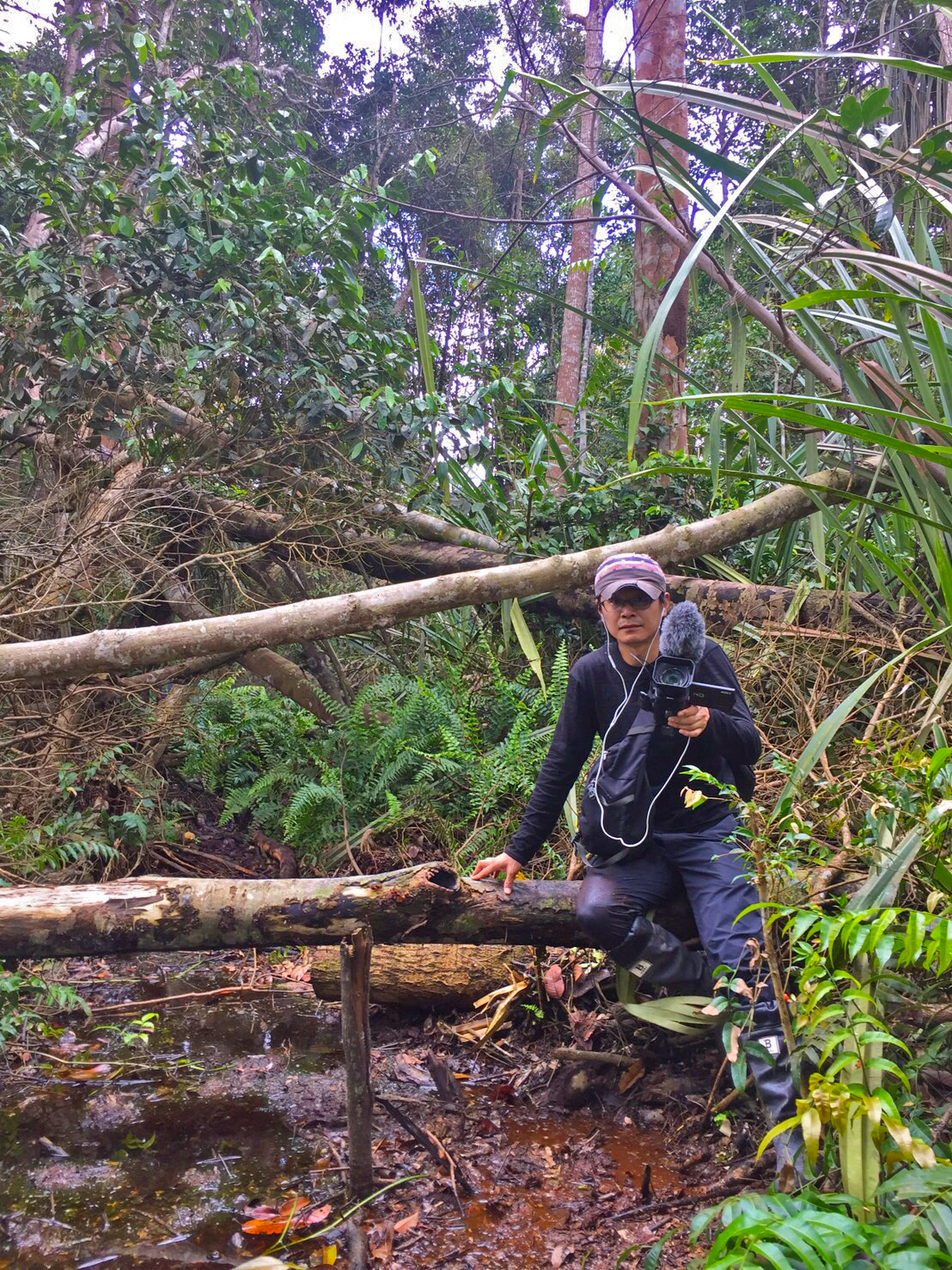
SAWAZAKI Kenichi
Born in 1978, based in Kyoto/Kochi in Japan. He is a Japanese contemporary artist, film director, curator, and researcher. He actively engages in collaborative projects with individuals from diverse fields and cultures to create a new paradigm for artistic and cultural expression while drawing upon contemporary art centered around visual media. Furthermore, He is engaged in verifying and analyzing the outcomes and impacts of these projects from artistic practice and academic research perspectives.
He has established interdisciplinary projects, which include the platform “Living Montage,” serving as the foundation for the interdisciplinary utilization of visual media, as well as the collaborative research project “Young Muslim’s Eyes: Crosswork between Arts and Studies.” While advancing these projects, he actively engage in the practical application of a hypothetical approach that leverages multimodal media.
His recent works include the exhibition “The Garden in Dialogue” (Yuhisai Kodokan, Kyoto, 2025), the exhibition “DANCING WITH ALL: The Ecology of Empathy” (21st Century Museum of Contemporary Art, Kanazawa, 2024-25), the multi-layered documentary film “#manazashi” (124 minutes, 2021, selected for the feature competition section of the Tokyo Documentary Film Festival), and the documentary film “The Garden in Movement” (Directed by Kenichi Sawazaki, 85 minutes, 2016, premiered at the Yebisu International Festival for Art & Alternative Visions 2016).
WEB : https://texsite.net
Cast
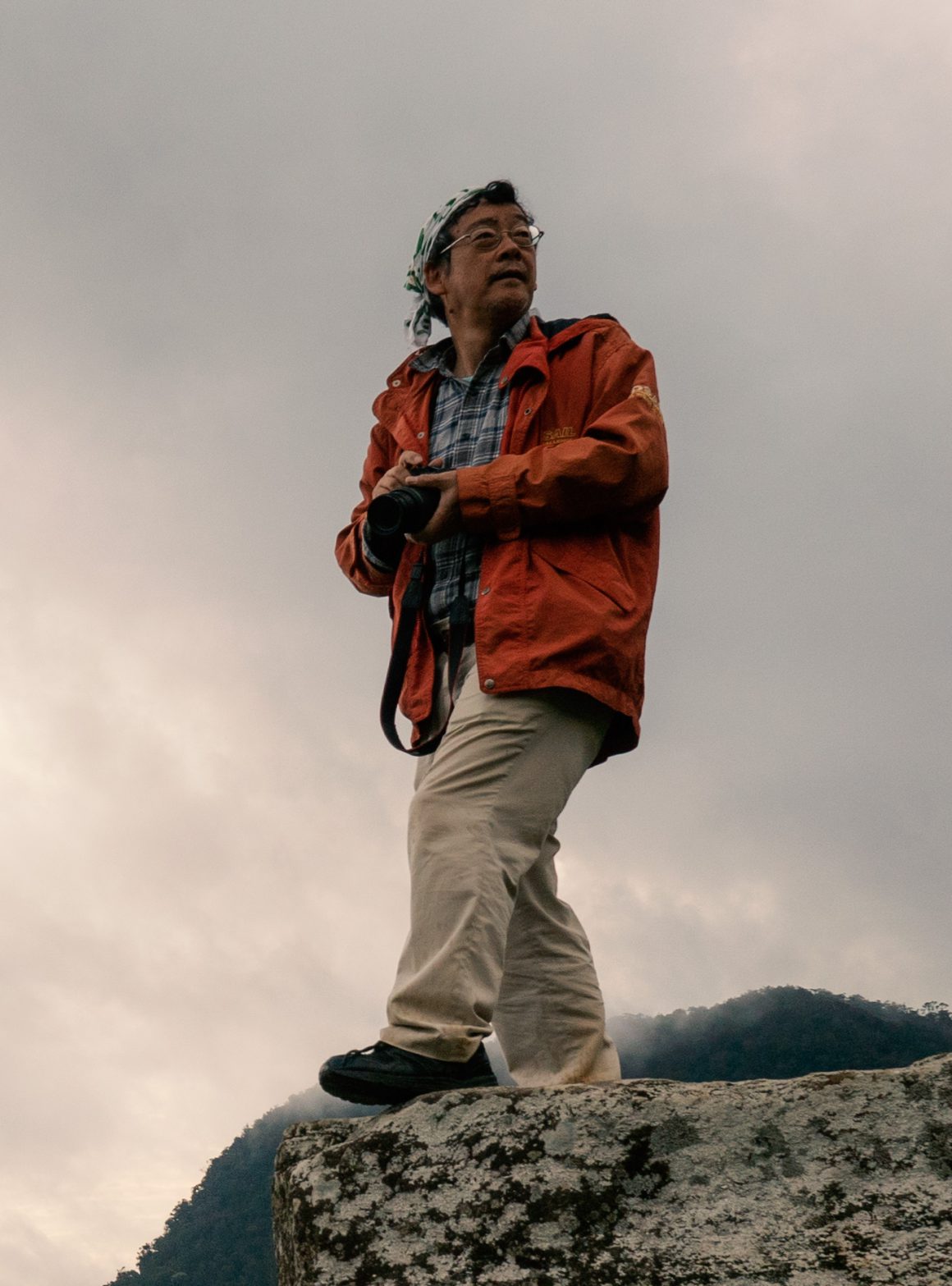
TANAKA Ueru
Born in 1960. Professor of Setsunan University(Department of Agri-Food Business) as well as Professor Emeritus of Hue University, Vietnam. PhD (Agriculture), Kyoto University. He specialises in environmental agriculture, soil science and regional development theory. His research seeks to create technologies and livelihoods from indigenous knowledge in Africa and Asia that enable both people’s livelihoods and the conservation of resources and the ecological environment, and to explore new development paradigms that enable ‘both people and nature’. He received the 25th Nikkei Global Environmental Technology Award(2015), the 41st Hitachi Environmental Foundation Award(Minister of the Environment Award, 2014) etc.
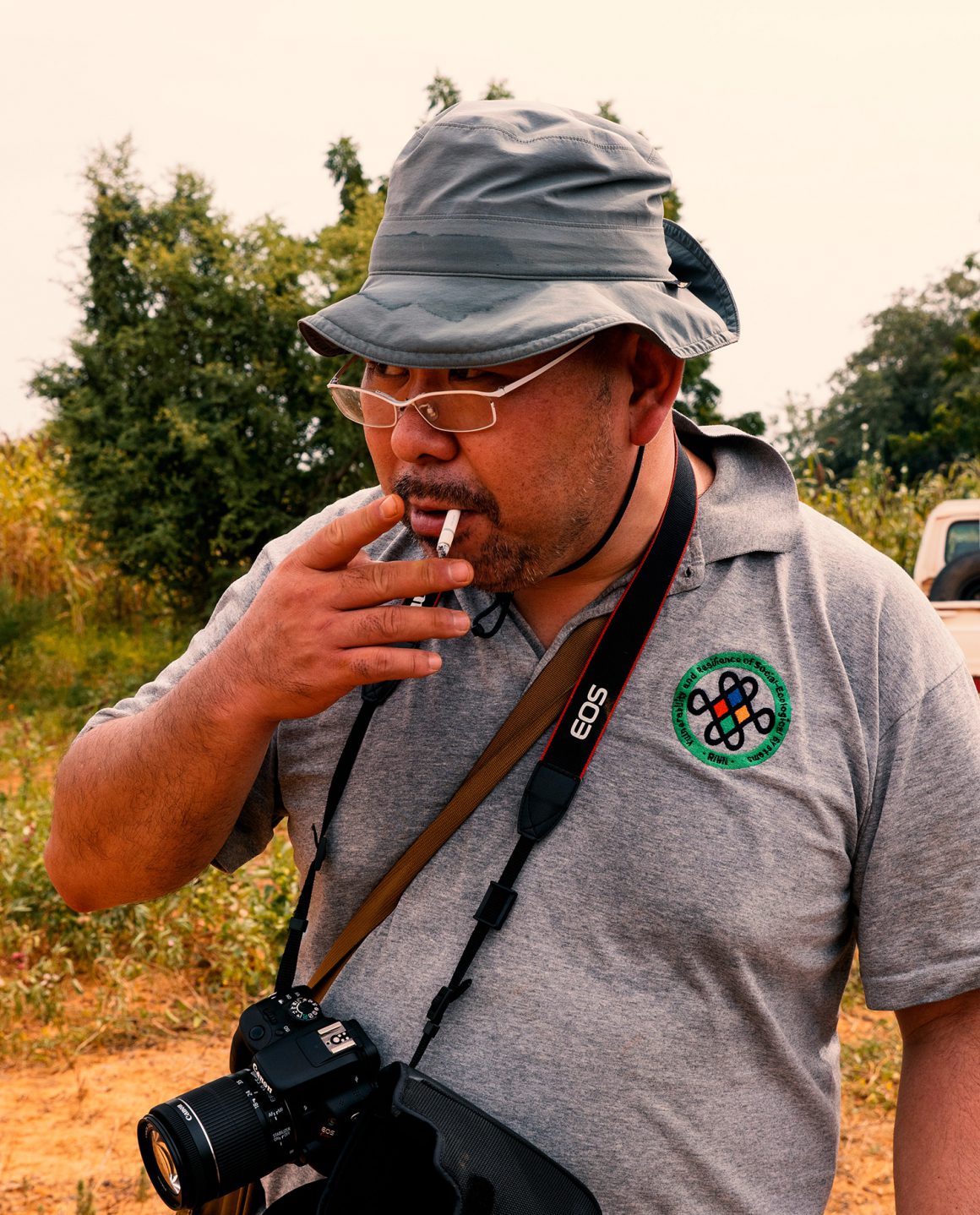
SHIMIZU Takao
Born in 1974. Associate professor of Kyoto Seika University(Faculty of Global Culture) as well as Visiting Associate Professor of the Research Institute for Humanity and Nature. Started going to Africa as a university student. He eats all over Africa and Japan, using his rugby-trained stomach as a weapon. He is more of a gourmand than a gourmet. His love of food has led him to write a book, Guidebook as an Swallow up! Burkina Faso! : An Anthropological Guidebook of West African Gastronomy (Airi Shuppan, 2019). He was really specialising in something different, but before long he was treated like a researcher of food culture, and he has somehow started to recognise this.
Credit
| Title | #manazashi ≒ The eyes in the clearing |
| Duration / Release Year | 124min / 2021-22 |
| Location | Burkina Faso, Tanzania, Kenya, Vietnam, Senegal, Japan |
| Directed, photographed, recorded, edited and produced by | Kenichi Sawazaki |
| Production | Living Montage |
| Cast | Ueru Tanaka, Takao Shimizu, Masashi Suda, Hidetoshi Miyazaki, Julien Sawadogo(Tilmnenga) Aboudulaye Ouedraogo, Lamin, Zakaria, Hamidou Sawadogo(Imam), Ahamed(Rastafarian), Baay Fall Ndem Jeremiah Saitabau Tanin, Benedict P. Mapunda, Jacob B. Chadibwa, Oumarou Ouedraogo |
| Commentary | Habaco, mon |
| Photographed by | Ueru Tanaka, Takao Shimizu, Masashi Suda, Lamin, Zakaria |
| Colour Grading | Masae Kariya |
| Acoustic Control | Ryo Okamoto |
| Special Thanks | Satoru Takahashi, Yoshimasa Ishibashi, Tomohisa Sato, Akihiko Inoue, Masato Hase, Melanie Jackson, Johnny Golding Daisuke Mizoguchi, Koki Teshirogi, Benoit Hazard, Christin Adongo, Yoshiko Takagi, Huynh Thi Thuy Tien Kyoto City University of Arts, Research Institute for Humanity and Nature, Global Environmental Forum, Kazehitotsuchi Gakusha, Centre for Africa-Asia contemporary Culture Center, Setsunan University, Royal College of Art |
| Grants | The Toyota Foundation, Japan Arts Foundation, Nomura Foundation |
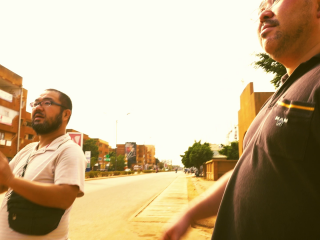
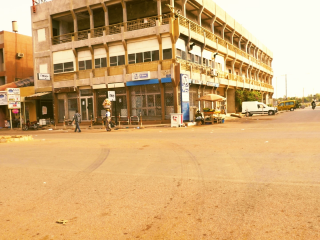
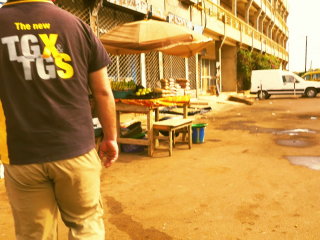
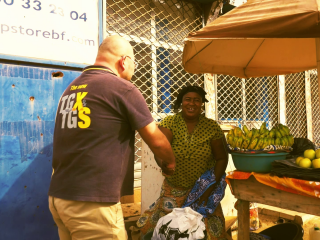
Related books, articles and videos
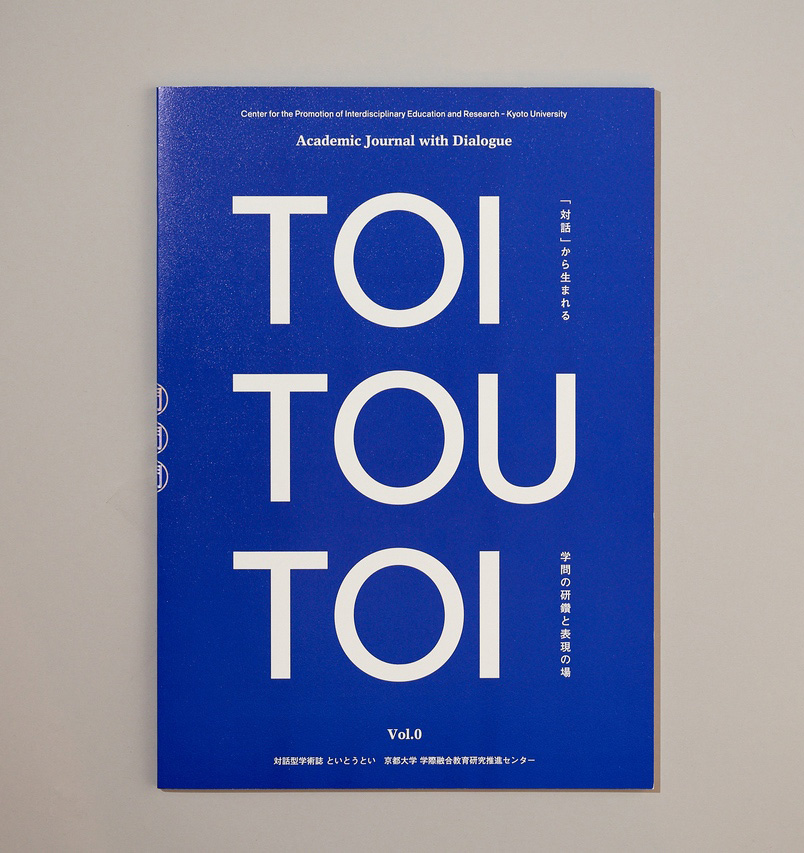
Kenichi Sawazaki “Living Montage: The Margins of the Field Research“
“Toitoutoi Vol.0”
Center for the Promotion of Interdisciplinary Education and Research, Kyoto University, 2021, pp.82-89
Many researchers conduct fieldwork to directly experience life overseas. However, isn’t it in the “margins” that don’t fit into the papers that the “experiences” that renew academia lie? The author, who is active as a filmmaker, discusses his own method of giving a new perspective to the value of the researcher’s experience.
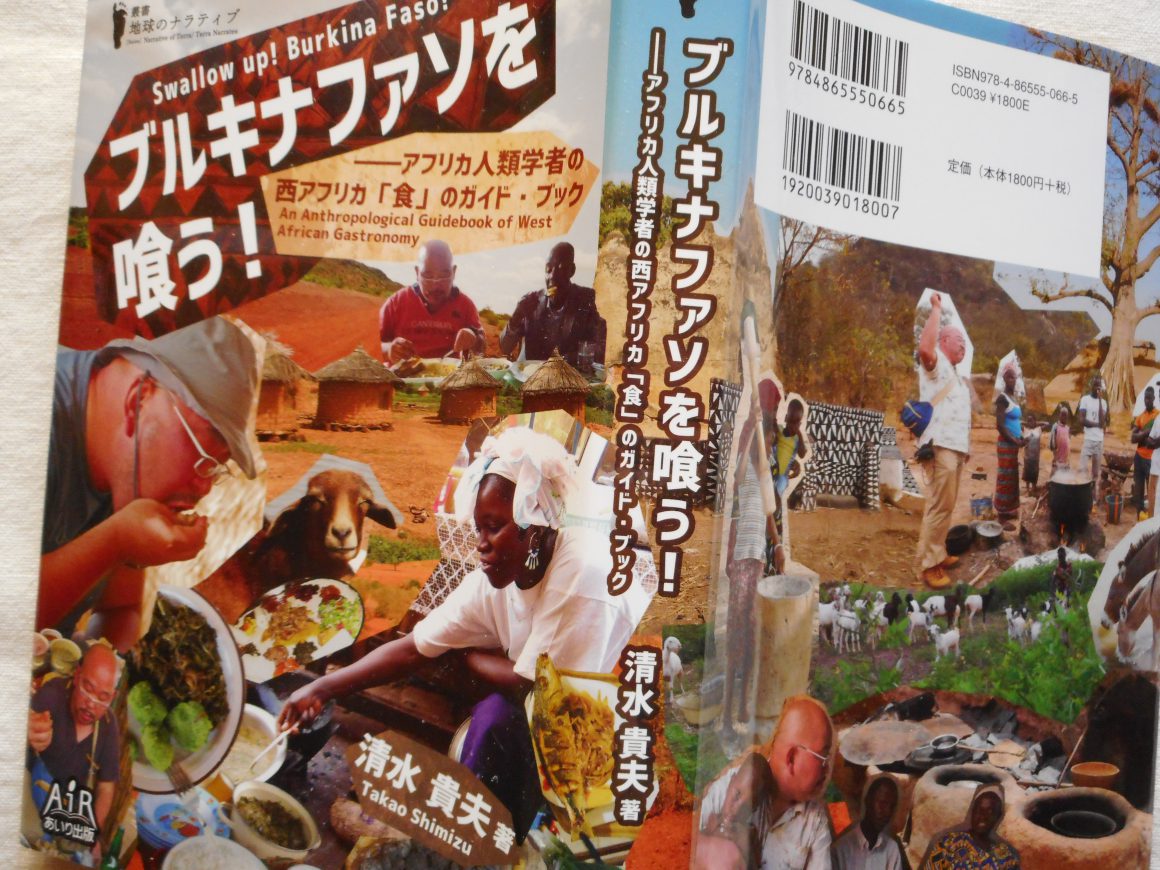
Takao Shimizu, Masahiro Terada, and Seiji Nakao “Guidebook as an Ethnography: On Takao Shimizu’s Swallow up! Burkina Faso!“
The series of ‘Narrative of Terra/Terra Narrates’ inaugurated with Takao Shimizu’s Swallow up! Burkina Faso! : An Anthropological Guidebook of West African Gastronomy in 2018. It is very well received by Japanese intellectual world and many book reviews on it appeared on Japanese major newspapers.
It is a unique book in that it is the first comprehensive book which provides Burkinese/West African cuisine in Japan. Furthermore, seen in the global perspective, it might be the only book which is specialized in such a topic.
If so, what is the significance of this book? Takao Shimizu, the author, Masahiro Terada, the series editor, and Seiji Nakao, anthropologist colleague of Shimizu, talk about the rich implication of the book.
Vanilla cultivation and Processing
6min30sec, 2019
JICA Partnership Program By CSSH-SUA(COLLAGE OF SOCIAL SCIENCES AND HUMANITIES, SOKOINE UNIVERSITY OF AGRICULTURE), GEF(GLOBAL ENVIRONMENTAL FORUM, TOKYO) AND JICA(JAPAN INTERNATIONAL COOPERATION AGENCY)
Video Produced By Living Montage
Filmed and edited by Ueru Tanaka, Masashi Suda, Kenichi Sawazaki

